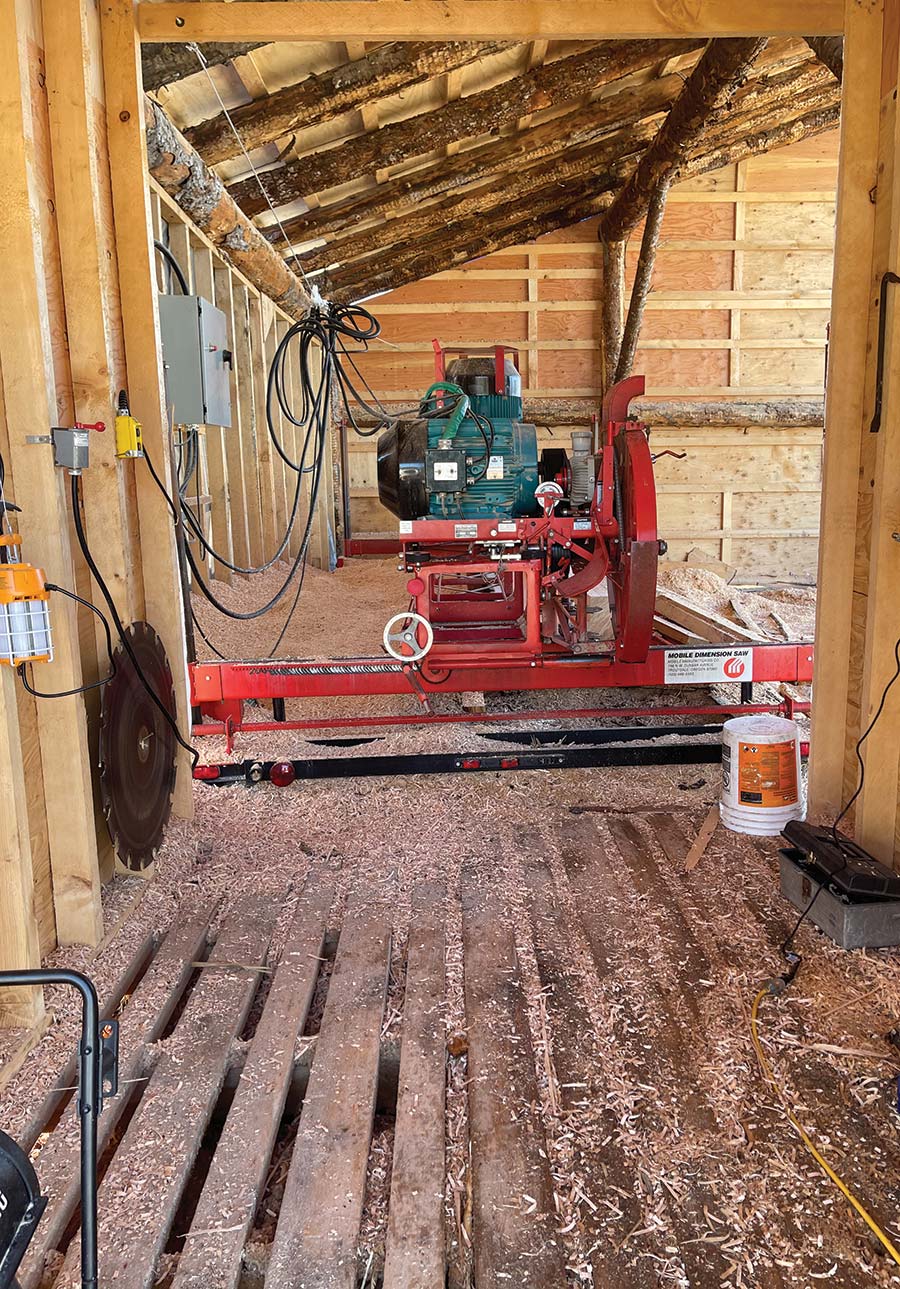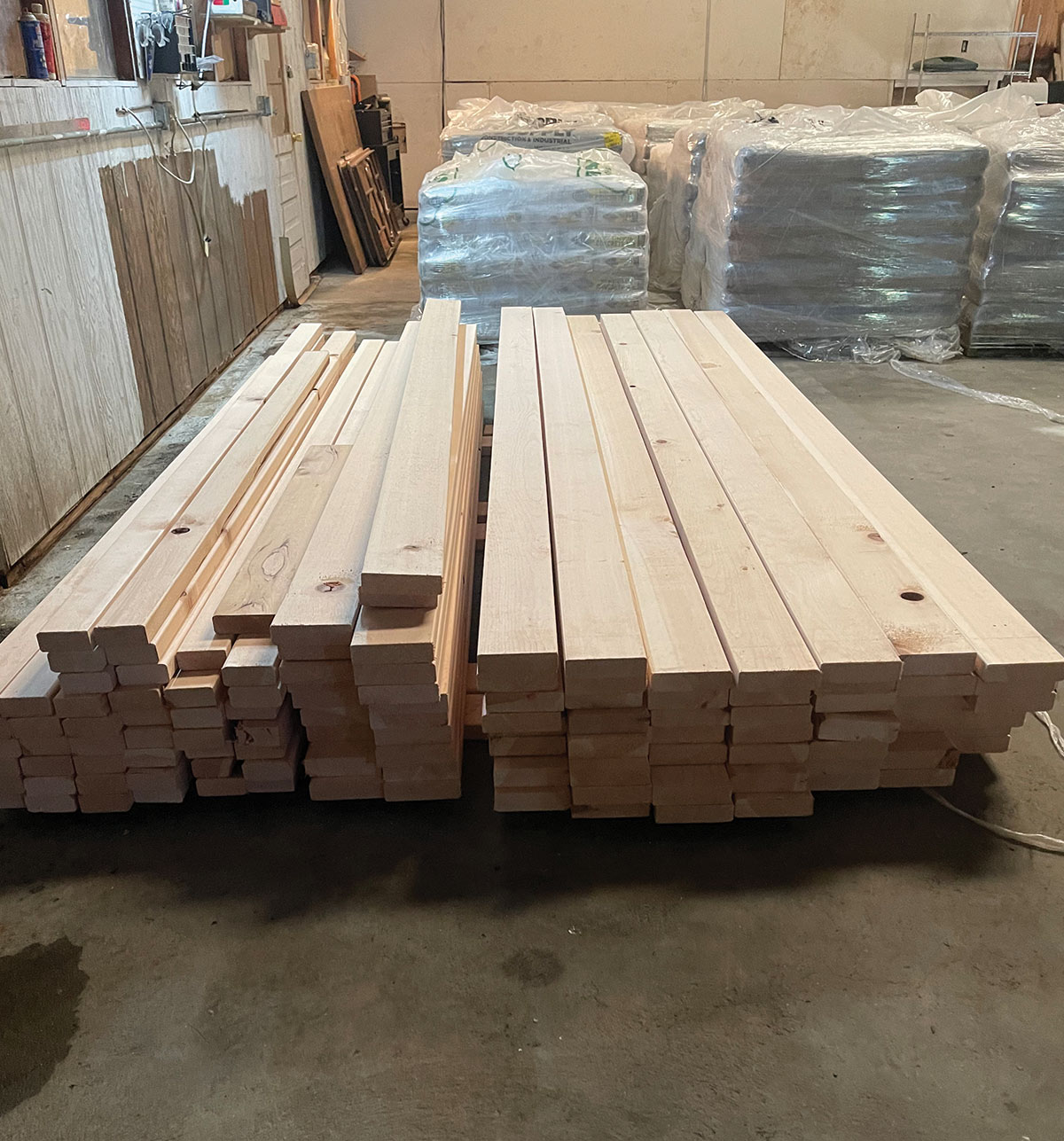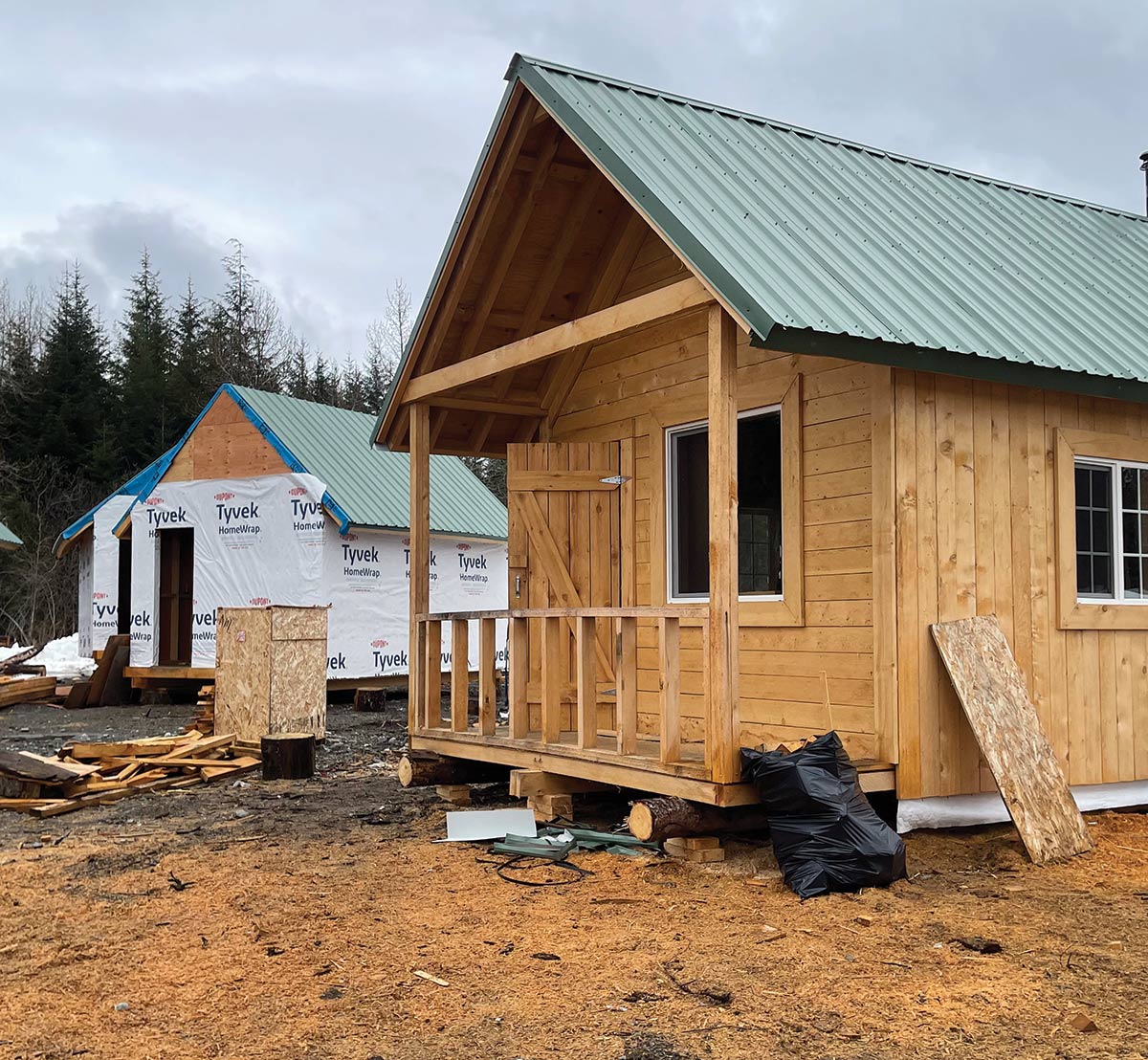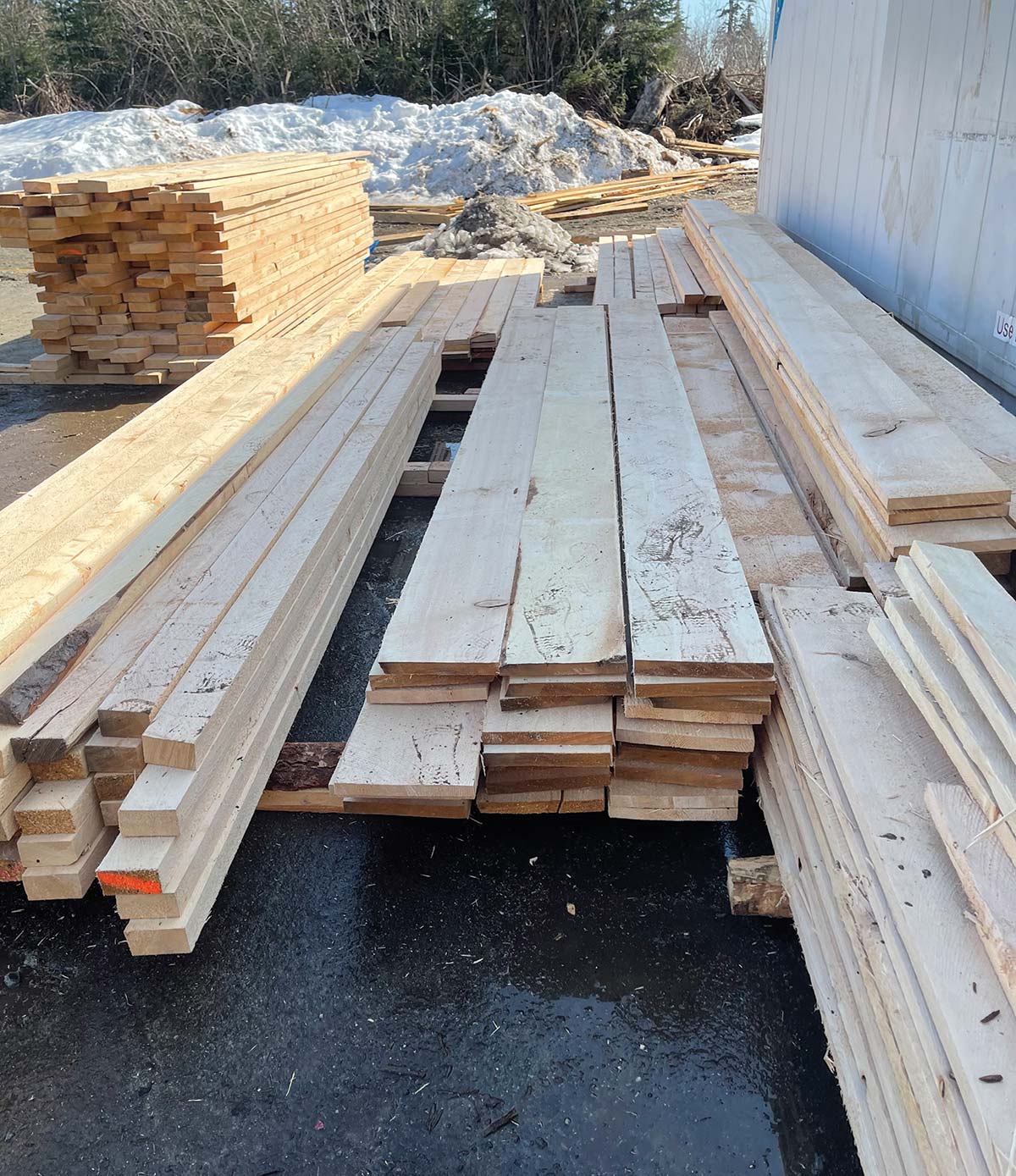he Alaskan spirit of self-reliance and community are deeply ingrained in the small-scale and boutique wood milling operations of the Last Frontier. From dimensional lumber for homes to furniture boards made of live-edge wood that reveals the natural contour and bark of trees, Alaskans are providing for Alaskans.
In the rural community of Yakutat, housing is limited and lumber is expensive, says Marvin Adams, the CEO of Yak Timber. Dismal fishing seasons in 2019 and 2020 compounded the troubles for residents in the community and put Yak-Tat Kwaan Alaska Native Village Corporation President Don Bremner on the hunt for creating jobs, Adams explains.
Community leaders proposed establishing a mill as part of a “Back to Work” plan to help prepare community members for what was expected to be a harsh winter in 2020. At the time, there was no milling operation associated with Yak Timber, which is owned by the Yak-Tat Kwaan corporation and was incorporated in 2018.
Located in remote Southeast, lumber supplies in Yakutat were significantly more expensive than in the Lower 48, in part due to the costs of transporting it on the monthly Alaska Marine Lines barge service. While the village is serviced by the Alaska Marine Highway, the business plan cited concerns about the reliability of service and access to space for lumber, as well as limited visits to Yakutat.
“Another contributing factor to limited local lumber supply is the extreme demand and need of local housing construction and renovation needs,” Adams writes.
Milling operations started last December, and at present Yakutat Mill & Lumber, under Yak Timber, focuses on dimensional, green lumber milling, which is the creation of 2×4, 2×6, 2×12, and other lumber often associated with construction. Dimensional lumber mills can cut these boards straight out of round logs with blades operating on vertical and horizontal planes at the same time.
“In addition to dimensional green lumber, the community can also benefit from economical full dimensional cut, kiln dried local lumber,” Adams writes. “We envision low cost, locally produced dimensional lumber for homes and commercial buildings and apartment units.”
The company has already built six tiny homes and sold two of them. These fully insulated dry cabins cost about $30,000 to build.
Adams explains that his hope is that the tiny homes the company is building can help people who don’t qualify for various federal or tribal housing programs but are still in need of stable housing.
Though it’s a small-scale mill, Yakutat Mill & Lumber is doing more than meeting local demand for lumber and tiny homes—it’s exporting green lumber to other parts of Alaska and Outside.
“The second revenue stream is a domestic export of local processed lumber to Anchorage, Seattle, and Southeast,” Adams writes.
Yakutat Mill & Lumber could not have come at a better time in the market. Demand in the United States skyrocketed during the pandemic, further spiking in May 2021.
“We were doing it to create jobs and help the community,” Adams says. “We didn’t have a crystal ball, trying to figure out it was gonna go through the roof.”
While prices have since fallen significantly, Adams explains that the company model wasn’t based on the high prices witnessed over much of the last year, so he is confident in the foundation of the newly minted company.
The key for Yakutat Mill & Lumber to break into the export market with its green, dimensional lumber was getting it certified. The lumber was certified by Pacific Lumber Inspection Bureau, a nonprofit, accredited lumber and wood products inspection and certification agency based out of Washington.
Yak Timber

Yak Timber
While greenwood comprises the majority of the board feet Yakutat Mill & Lumber produces, the company is also pushing forward with creating kiln-dried wood. Unlike greenwood, kiln-dried wood has had the moisture concentration taken down low enough to prevent it from shrinking with age, making it ideal for certain types of projects.
“When you’re getting into the finished wood, you really want to have kiln wood,” Adams says, though he points out that sitka spruce is particularly good greenwood for certain types of building.
The company created its kiln, which can be used to dry about 3,000 board feet a week, using a converting kit with a refrigerated container, Adams explains. The kiln-dried wood is also certified.
“The real surprise factor, for I think all of us, was the simplicity of getting kilned wood,” Adams says. “We always thought it was a huge, huge, big process that was just really expensive and challenging, but it’s really not.”
The company has plans to put in four more kilns.
While Yakutat Mill & Lumber is looking to expand, it’s already met its primary goals in serving the community and Yak-Tat Kwaan village corporation shareholders, Adams says. The mill has created four full-time jobs and has already helped put roofs over heads.
“We are custom millers,” says Gordon Chew, the father in the operation. “In other words, we don’t have a lumber yard. So when we get an order… we cut that timber to any size they want.”
“We actually lose money logging; no one’s paying us to cut the trees,” Chew explains, noting that he and his son, Sterling, buy the trees in advance from the US Forest Service. “Then we go in and fall them, yard them after limbing them, put them on the log truck and bring them home, sorting them in the log sorting yard, and then sell the lumber.”
About 75 percent of the yellow cedar Chew mills is for decking projects. Unlike trim, indoor flooring, or other finished wood projects, outdoor timber doesn’t need to go through a kiln-drying process, Chew explains. Yellow cedar is a particularly popular choice for decking in Southeast Alaska because of its durability against rot. It’s also a favorite of shipwrights repairing boats in Alaska’s fishing fleet, Chew notes.
Yellow cedar is a high value timber, but sitka spruce also has moments where it shines. Sitka spruce, especially old growth, can provide a different type of high-end product: tonewood. Its nearly flawless vertical grain is used by major guitar manufacturers, as well as for other string instruments, Chew says.
While Chew typically sells tonewood to guitar manufacturers, he has also found wood markets for other instrument crafters.
“We sell our 2x2s to Native American flute builders,” Chew says. “It’s a thing and it’s pretty popular. They bore them out and then make flutes.”
When Chew sees a piece of lumber of particular beauty or quality, he has the habit of setting it aside for artists, as well as musicians.
“It’s fun to supply timber to people who turn it into $1,200 pieces of art,” Chew says.
While not all the lumber produced by Chew and his son are of the quality necessary for building instruments or art, Chew is certain that the boards they bring to market are of a higher quality—straighter, heavier, and with fewer defects—than the milled lumber found at any big box store.
Yak Timber

Yak Timber
“It probably would have impacted us if we were closer to markets, and if we were exporters,” Chew says about the spike in prices earlier in the year. While admitting to occasionally daydreaming of the windfall of profits that could come with an export business, Chew says that the kind of logging operation needed to make that happen doesn’t fit with his business model or value system.
“We want to be a part of this for the long run and we want the planet to survive too,” Chew says. “We are in the largest temperate rain forest on the planet, and seven of the seventy-seven intact watersheds in the Tongass National Forest are right out my window.”
Two to three years ago, Tenakee Logging Company bought its first round of second-growth timber to market.
“The younger timber is new for us. It’s like we don’t have a market for it,” Chew says. Nonetheless, he said he was impressed and pleased by the quality of the lumber coming from the younger growth as the company selectively harvests trees.
Tenakee Logging Company
Chew says he takes pride in seeing his lumber going to schools for students to learn carpentry and seeing other lumber he milled being used to create homes in remote communities, like the ones his son has built under the company name of Second Growth Homes.
Yak Timber
Yak Timber

Yak Timber

Yak Timber
Rittgers cut slabs out of it.
“I was pretty impressed,” Wehrli says. “I asked him about purchasing an LT28, and his story there was, ‘Well Ron, let me tell you something about buying a sawmill: It’s a lot like building a shop. You get it all done, step back and look at it, and realize it’s already too small.’”
Yak Timber

Yak Timber
Yak Timber

Yak Timber
“I’m specializing more in the live-edge sector,” Wehrli says, while noting that he is able to do some dimensional milling.
Running the one-man operation, with friends helping out where they can, Wehrli says he can’t keep up with the orders. Nonetheless, he’s continued to expand his work and the tools he has, including importing a Lucas 72-inch dedicated slabber.
The demand is primarily from people wanting live-edge tabletops, headboards, shelving, and custom countertops, Wehrli says.
“The live edges, you know, it’s been around for a long time, hundreds of years,” Wehrli says. “It has never really gone out of style.”
Wehrli explains that he works with a lot of DIY woodworkers looking for lumber for projects and seeking advice on how to use epoxy.
His voice brightens when he talks about the results: customers coming back to his shop and pulling out their phones to share a picture gallery of their project with him.
“It’s the caliber of people and their attitude, which is just awesome all the way around, that walk through the door,” Wehrli says. “It makes me feel good to see people building quality heirloom furniture right out of the gate.” ![]()